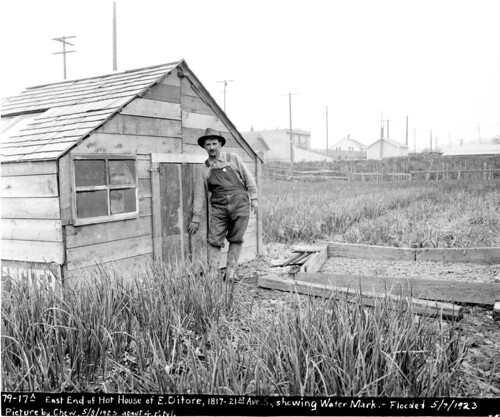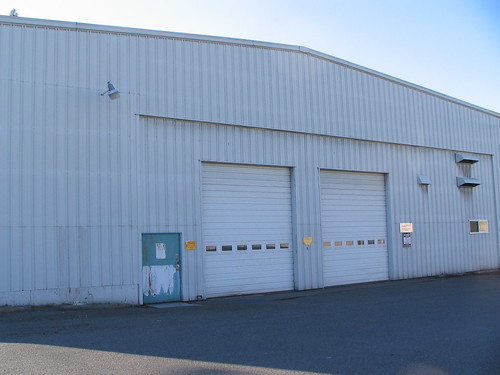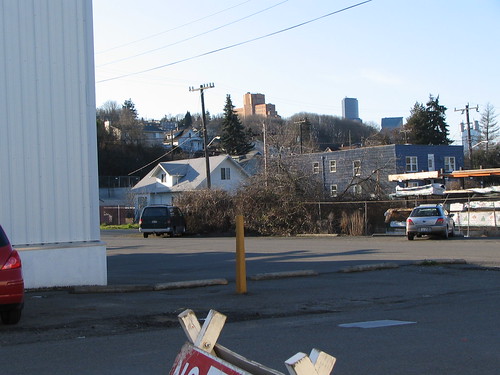

At first glance this is one of the less-recognizable past/present photos we have. In 1923, there was a considerable amount of farming in this lower Beacon Hill/upper Rainier Valley area, an Italian neighborhood, but now this spot just off Rainier Avenue, in the 1800 block of 21st Avenue South, is just a big ugly warehouse.
Still, something has survived. See the apartment building behind Mr. Ditore’s hot house? If you move just a bit further north on 21st, you can see it:

The Polk Directory for Seattle in 1923 lists Antonio Ditore, a gardener, and his wife Grace residing at this address. Though the 1923 photo is captioned “E. Ditore,” this seems likely to be Antonio. You can read more about Antonio Ditore, one of the farmers who sold at the Pike Place Market on its opening day in 1907, and see a picture of him years later with his garlic crop. (Scroll down to the post by John Ditore.)

I just wanted to say that I always enjoy these little then an now entries.
When I moved into our house on Beacon, I contacted county records and was able to order a copy of a picture of our house from 1950 (the year after it was built). It was great getting this little snapshot of our house “back in the day.” (Though admittedly, it’s not that long ago.) And helped me feel like I had a little more stake in the history of this hill.
Its definitely an excersize I’d recomend for others living here.
We have done that also. We have a picture from the 30s and one from the 50s.
Just a bit north of the area pictured is an entire block that is empty, adjacent to the Oberto factory store, which I believe is their original factory. Well, the Obertos still own that empty block.